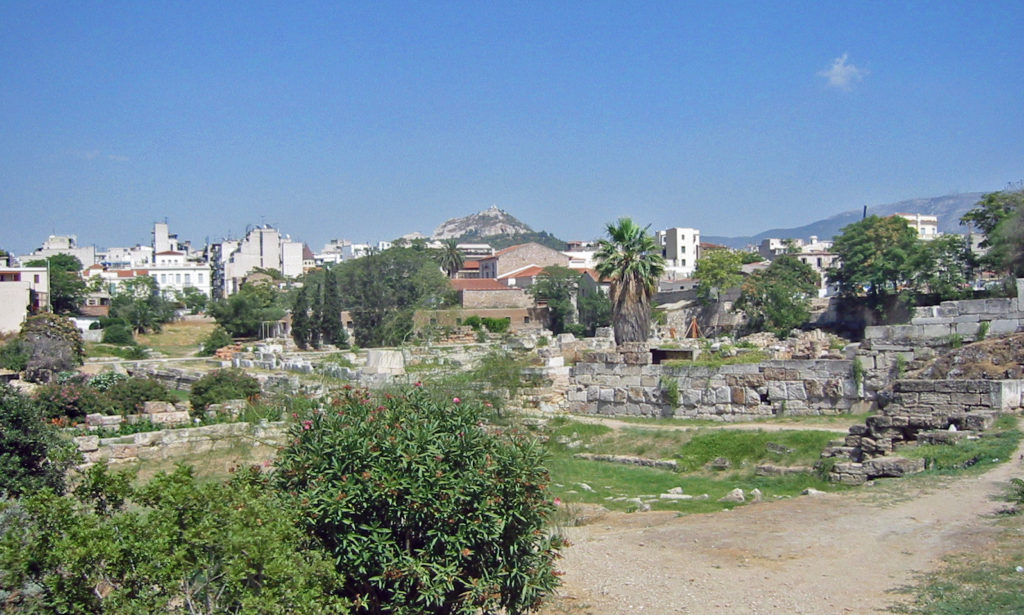
Most visitors to Athens, Greece, make their way to the Parthenon. Few visit nearby Kerameikos, the location of one of the most famous speeches in history.
Kerameikos, northwest of the Acropolis, was once home to potters attracted by clay deposits along the Eridanos River. The name “Kerameikos” derives from the Greek word for pottery, the source of our “ceramic.” The area was also the site of an ancient cemetery. In 479 B.C., after Persian attacks, Themistocles, an Athenian politician, erected a wall around Athens to protect it from further invasions. The five-mile long “Themistoclean Wall,” opposed as provocative by Sparta, bisected Kerameikos, placing most of the cemetery outside the wall. The Dipylon Gate, located in Kerameikos, became the main entrance to Athens. The cemetery area outside the wall became the burial site of prominent Athenians. In 461 B.C., Pericles became the Athenian leader and built the Parthenon atop the Acropolis to replace an earlier temple to Athena destroyed by the Persians, with a road running from the Dipylon Gate to the Acropolis. In 431 B.C., Sparta attacked areas around Athens, initiating the Peloponnesian War. The next year, Pericles stood near the Diplyon Gate and delivered his famous Funeral Oration. As reported by Thucydides, the 2800-word speech honored Athen’s war dead and exhorted the living to defend Athen’s democratic government, “in the hands of the many and not of the few,” against enemies trying to destroy it. Scholars see in Lincoln’s Gettysburg Address several parallels to the reported words of Pericles. Pericles died of the plague in 429 B.C. and was buried in Kerameikos.
Today, 11 acres of Kerameikos, within walking distance of the Acropolis, have been excavated. The area includes a section of the Themistoclean Wall and reproductions of grave markers of prominent Athenians. The Kerameikos Archeological Museum displays numerous artifacts uncovered during the excavation.
Comments are closed.